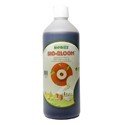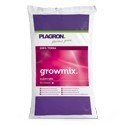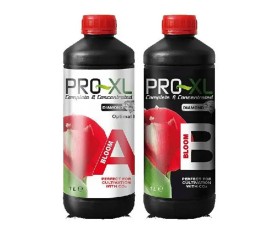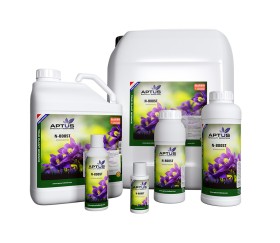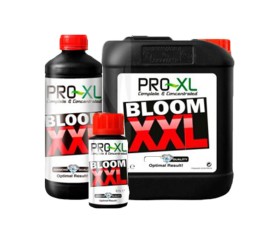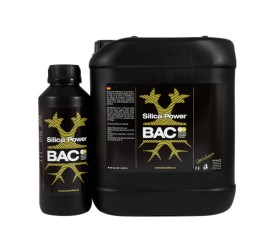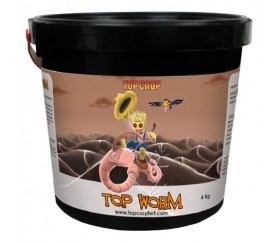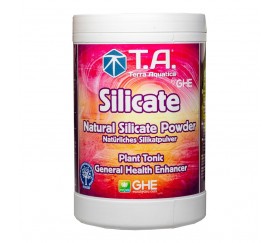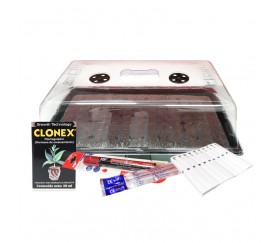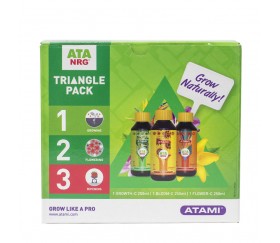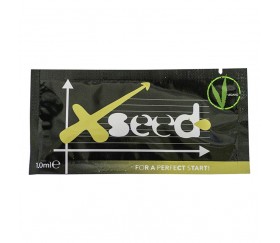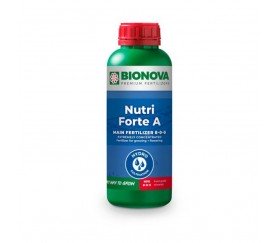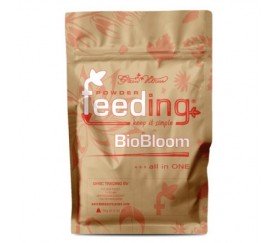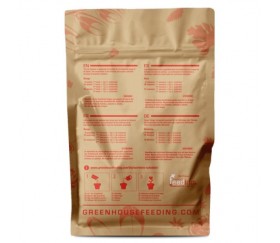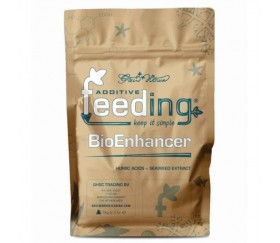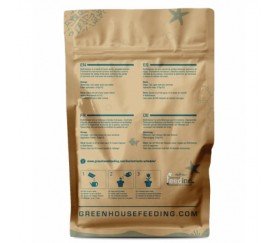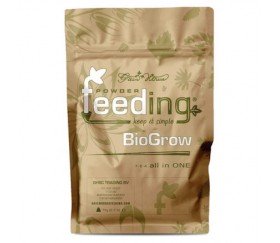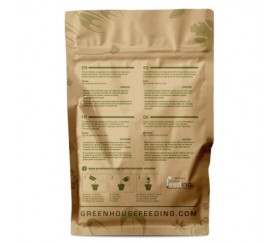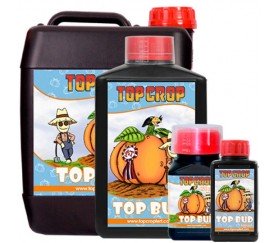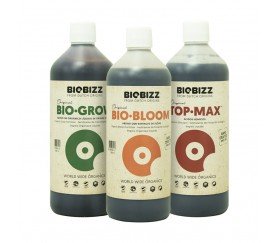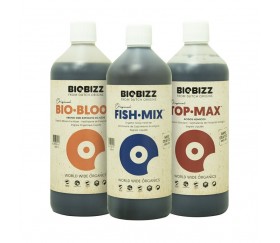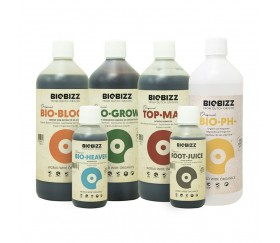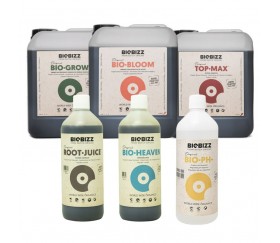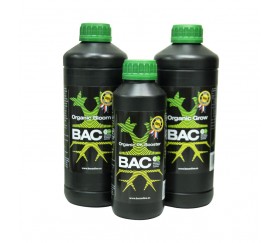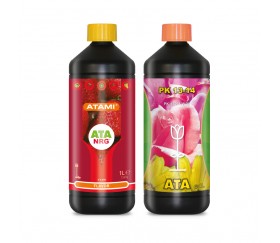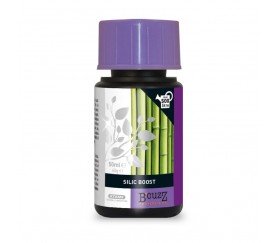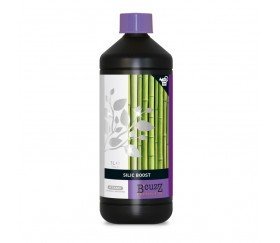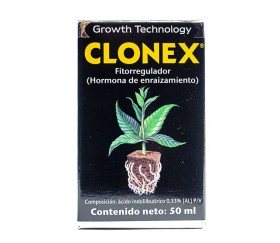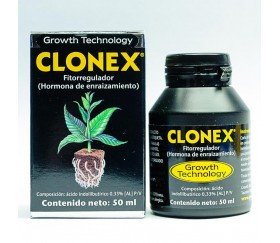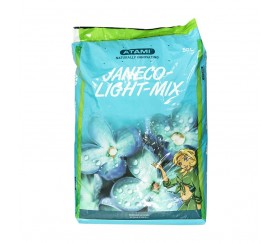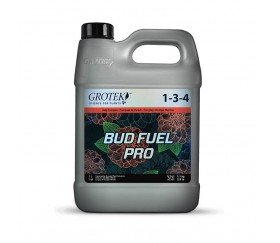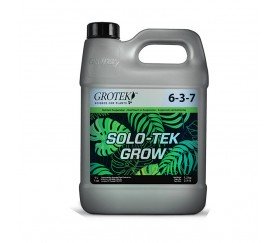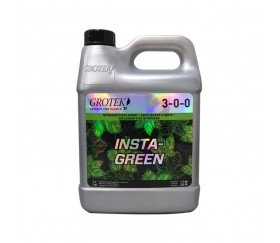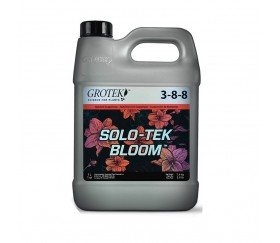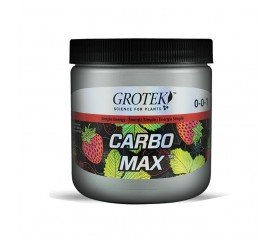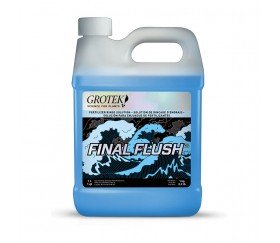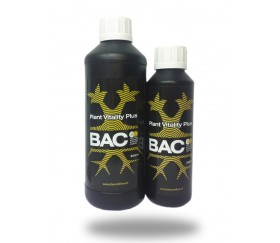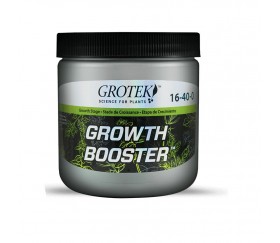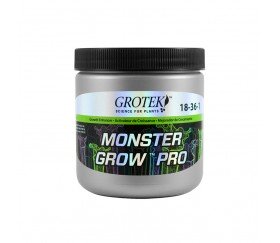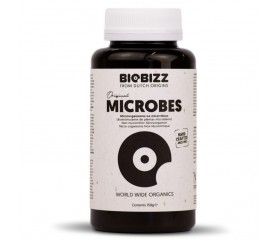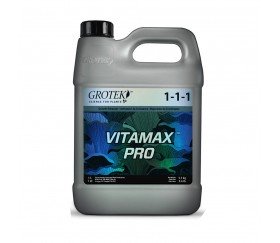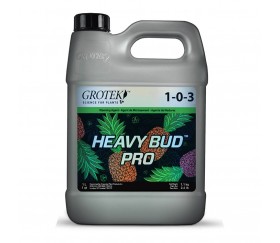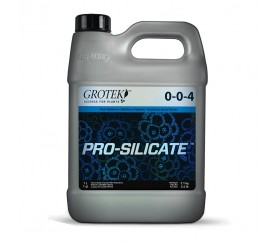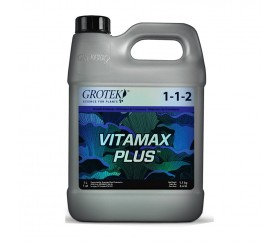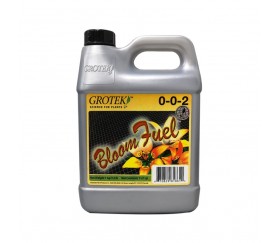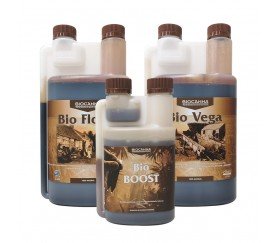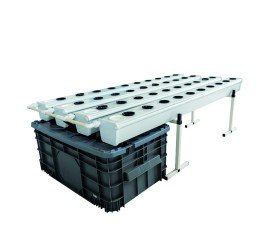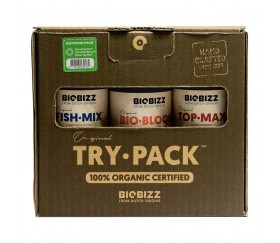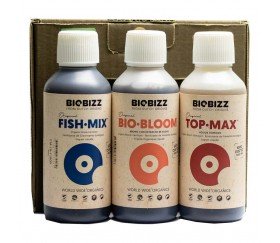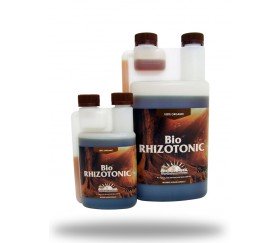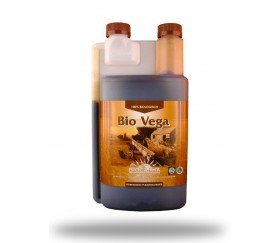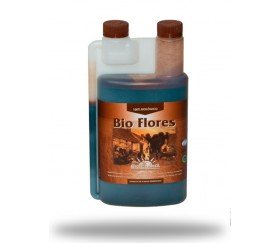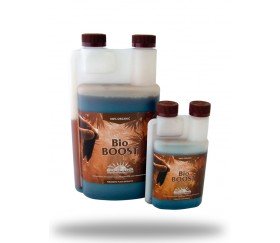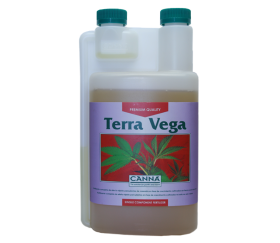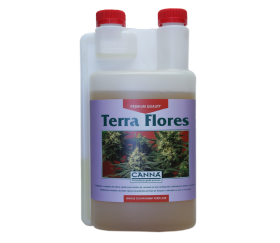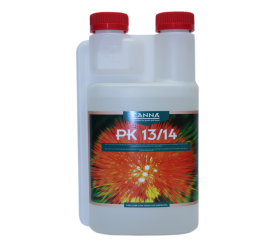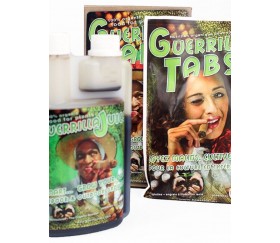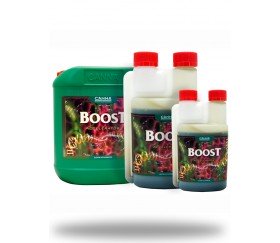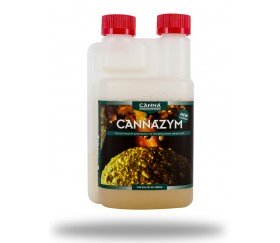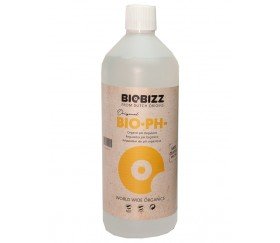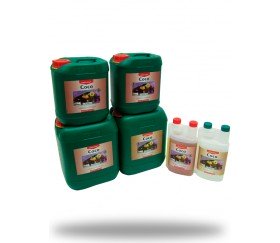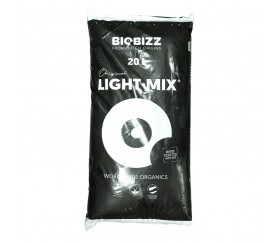Fertilizers and Substrates
What Are Cannabis Fertilizers?
Just like people need the right nutrients to live healthy lives, plants also need nutrients in fertilizer and substrate form. Fertilizers can determine a lot of the quality of your final yield.
Cannabis plants, also known as marijuana, grow quite fast so they need to consume a lot of nutrients.
If you give them the basic nutrients, stimulants and additives that they need during their growth and flowering processes, you can harvest high quality yields.
Another important detail is pH control and regulation in your nutrient solution.
Make sure to follow a basic feeding schedule when growing cannabis for the best results.
If you want to make the most of your grow and get the absolute best results, as well as basic growth and flowering fertilizers you can also use stimulants and additives.
You can use stimulants during both the veg and bloom periods, as well as other types of additives such as enzymes in order to stop nutrients from building up, mycorrhizae in order to create the ideal bacterial system in the substrate, or bud fatteners in order to get even larger yields.
Making sure that your plants’ needs are covered at all times for the best possible performance and results.
Types of Cannabis Fertilizers
Depending on the origin of the nutrients in the fertilizer, they can be divided into organic, mineral and bio-mineral.
How to Choose Cannabis Fertilizers
Your choice will depend on the origin of the fertilizers and your budget; you’ll get different results depending on the type of nutrients used.
Organic and Bio Fertilizers and Additives
Organic and Bio Fertilizers and Additives come from vegetable materials, algae and other natural and organic sources.
Pros:
- It’s much harder to over-fertilize your plants.
- It’s much easier to wash out your roots at the end, and in many cases you don’t need to if you stop fertilizing a few days before harvesting.
- Large yields with intense, original aromas and flavours from each strain.
- Creates beneficial life in substrates.
Cons:
- They do have a sell-by-date due to their natural ingredients.
- Plants absorb organic nutrients much smaller than mineral or bio-mineral nutrients.
Mineral & Chemical Fertilizers and Additives
Mineral or chemical fertilizers and additives tend to be made using industrial means with ingredients coming from minerals such as phosphates.
We recommend using Cannazym enzymes when growing this way in order to stop minerals from building up in the roots as they can cause nutrients to back up.
Pros:
- These are much easier for your plants to absorb, so they produce a much faster effect.
- You can use them to maximize yield.
- They tend to be more affordable.
Cons:
- It’s easier to accidentally over-fertilize your plants due to their high concentration and easy absorption.
- During the final growing phase, cannabis plants tend to contain high amounts of nutrients so you’ll have to wash the roots out more than usual and even use a cleaner to filly remove any residues from your plants.
Bio-mineral Fertilizers and Additives
Bio-mineral fertilizers and additives come from a combination between nutrients and/or organic additives as well as inorganic additives, whether they’ve been mixed or chemically treated.
Pros:
- These products tend to be highly concentrated, so you need to use small doses.
- It’s much harder to over-fertilize plants than when using mineral nutrients.
- High yields with decent aromas and flavours.
Cons:
- You’ll need to wash the roots out thoroughly at the end of the flowering period, as your plants may end up finishing up with high amounts of nutrients.
What Fertilizers or Nutrients do we stock at La Huerta Grow Shop?
Out stroe stocks some of the best nutrients; from professional brands with years of experience in the sector such as Canna, BioBizz, Advanced Nutrients, Hesi or BAC to more innovative, successful brands such as Top Crop or American brands like Emerald Harvest and Botanicare, with an enormous catalogue designed to give your plants everything they need:
- Root stimulants such as Bio Rhizothonic, Rootfast or Root Wizard, among others.
- Growth stimulants such as Organic Grow, Terra Vega or Bio Grow.
- Stimulants or growth maximisers like Green Explosion, Liquid Karma o Bio Heaven.
- Flowering stimulants like Delta Nueve, Big One or Bio Boost.
- Flowering fertilizers such as Terra Flores, Organic Bloom o Bio Bloom.
- Bud fatteners like PK 13 14, Blossom Builder or Monster Boom.
- Carbohydrates like Carboload.
- Enzymes such as Powerzyme, Atazyme or BN Zym.
- Solid fertilizers (ideal for large grows outdoors or large amounts of substrate), like Power Feeding, Nitroguano or Superguano.
- pH adjusters such as pH- or pH+.
- Other additives such as Canna Nitrogen or Xcel.
- Fertilizer packs that allow you to save money.
…and many more!
What is Substrate?
Substrate is the medium in which your plants live, which is to say, where they develop roots.
As we were saying earlier, good substrate is of incredible importance right from the start of the growing process in order to ensure proper growth.
All of the substrates here at La Huerta Grow Shop are high in quality and perfectly clean. The main difference between our substrates is the amount of nutrients contained and the type of grow they allow for.
What types of Substrate are There?
There are three types of growing methods when categorized by substrate: soil, coco coir and hydroponics.
Growing in Soil
Soil for growing is generally a mix between peat, vegetable fibres, hummus and other elements such as perlite.
Pros:
- Most of these substrates contain nutrients for your plants for at least one or two weeks.
- Plants can absorb accumulated nutrients generated in the substrate, which doesn’t happen in coco coir substrates.
- This type of grow tend to produce more intense aromas as you can use entirely organic products.
- You can easily harvest decent yields as plants can deal with more issues and changes in this type of growing medium.
Cons:
- Soil can be hefty and hauling it around can be uncomfortable.
Growing in Coco
Coco is an inert substrate, which means that it doesn’t contain any type of nutrients. However, it is quite aired out, which is why coco coir is often added to some soil mixtures.
Pros:
- Roots grow much faster in coco coir, which means that your plants grow much faster too as it accelerates their metabolic processes.
- You can obtain high yields as you'll be able to fully control the nutrients that your plants receive.
- Coco is also available in coco slabs, which are easy to move around and transport.
Cons:
- This type of substrate can only be used with mineral products or highly filtered organic nutrients as no life can be created in this type of substrate.
- It’s inert, so you’ll need to use nutrients practically every time you water.
Other Growing Medium: hydroponics, rockwool etc.
When it comes to these grows, your plants’ roots aren’t buried in the soil but rather they’re in constant contact with your nutrient solution. Depending on the method you’ll need to use a certain system or substrate such as rockwool or expanded clay.
Pros:
- You can increase nutrient levels quite a lot as you have more control over your plants’ feeding, allowing you to increase your yield by quite a lot.
- Growth is much faster.
Cons:
- You’ll need to keep a very close eye on your water quality; any issues can ruin your grow within a matter of hours – you can’t make as many mistakes here as you would be able to when growing in soil or coco.
What substrates can you find in this category?
At La Huerta Grow Shop you can find light substrates such as Janeco Light Mix by Atami or Light Mix by BioBizz, with enough nutrients for the first two growth weeks, medium substrates like Grow Mix by Plagron, which has around four weeks of nutrients, and even heavy substrates such as All Mix by BioBizz with enough nutrients for around six weeks.
If you need soil for your land or want to make your own mix, we recommend using more affordable substrates like Sabika Light Mix.
We also stock other types of substrates or additives for substrates like perlite or vermiculite.
In the coco coir category you can find coco substrates such as Plagron Coco or Atami Coco, as well as coco bricks.
Having an issue picking the right nutrients or substrates for your plants? Check out our post on how to fertilize cannabis plants and how to pick the right substrate for cannabis.
Remember, you can always get in touch with our team of professionals if you have any questions.
Subcategories




